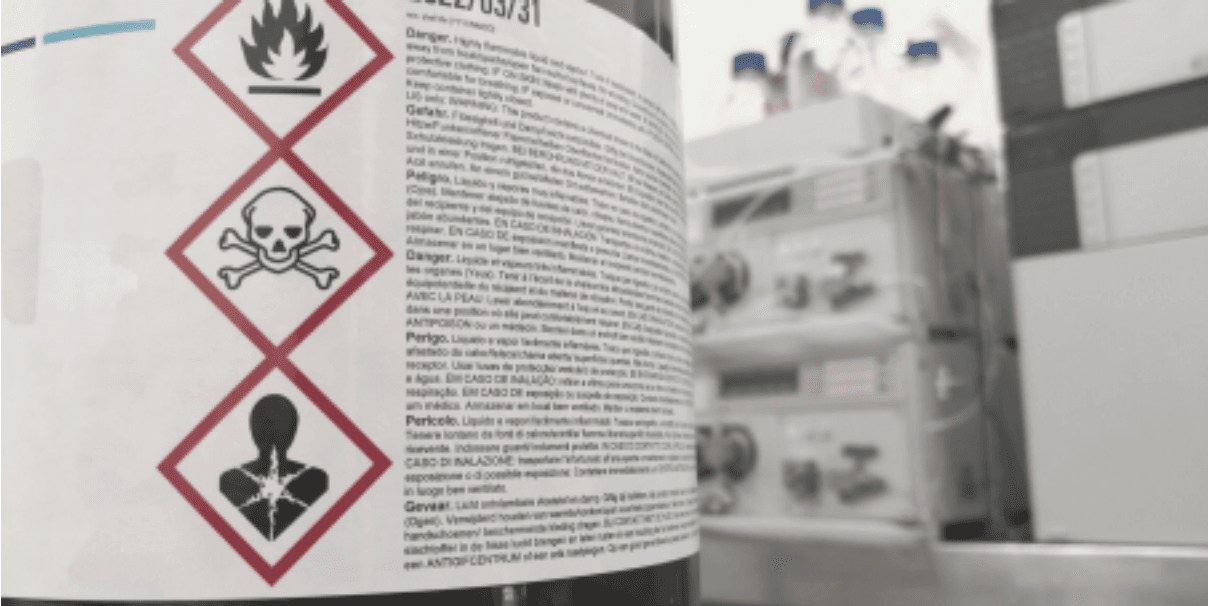Why is GHS important outside the laboratory?

The Globally Harmonized System of Classification and Labeling of Chemicals (GHS) is an international system of classifying and labeling chemicals. It can be used by countries around the globe in order to communicate the hazards brought about by chemical products. The aim is to provide easy access to high quality and consistent information regarding the hazards of these toxic chemicals, specifically for all workers involved in handling these compounds across various industries (e.g., warehousing, agriculture, construction, manufacturing). GHS was developed to ease compliance, promote regulatory efficiency, reduce costs and the need for animal testing, facilitate trade, and promote proper handling and response to chemical mishaps. The scope of GHS covers pesticides, agricultural, pharmaceutical, industrial, as well as consumer chemical products, with the handling personnel as the target audience. It also helps in the proper segregation and storage (before, during, and after use) of chemicals.
Aside from the usual data such as the chemical name and manufacturer’s info, the GHS label includes;
● Symbols (hazard pictograms to show various hazard information);
● Signal word (indicates the relative level of hazard);
● Hazard statements;
● Precautionary statements
● Additional product identifiers (Global Trade Item Numbers (GTINs), Manufacturer Part Numbers (MPNs), etc.)
Signal words like “DANGER” or “WARNING” are key elements of the labeling system, as well as the hazard pictogram enclosed in a red diamond which depicts what kind of threat (e.g. health, physical, or environmental) a chemical poses.
All of these are already extensively applied in laboratory set-ups; therefore it is important to point out that chemical usage and handling is not only confined within the laboratory, but also outside, such as in manufacturing where there is a higher possibility of mishandling due to lack of orientation and information.
Department order no. 136-14, or the Guidelines for the Implementation of Globally Harmonized System (GHS) in Chemical Safety in the Workplace emphasizes that, “the guidelines shall apply to ALL workplaces engaged in the manufacture, use, storage of industrial chemicals, in the private sector, including their supply chain.” It specifically aims at protecting personnel and properties from hazards brought about by chemicals, as well as to prevent or reduce accidents, illnesses, injuries, or even death due to chemical exposure, as is indicated in section 2. It is applicable anywhere, and everywhere chemical usage and handling occurs. It emphasizes that a Chemical Safety Program be developed, and shall be spear-headed by a Safety and Health Committee, whose functions include, but are not limited to:
● Planning and development of accident prevention programs;
● Aligning and updating the establishment’s safety programs with government regulations;
● Regularly conducting monthly safety meetings;
● Leading safety trainings and orientations for employees;
● Preparing and creating disaster contingency/emergency plans; and
● Reviewing and submitting reports with regards to inspections, accident investigations, and program implementation.
The responsibility of employees then would be to abide by the rules and regulations as stated in the establishment’s safety program, and to keep in mind as to why such programs are in place. They should familiarize themselves with the chemicals they are exposed to, how to properly handle them, and what to do in case of accidents. Strict compliance shall be observed to avoid any untoward incidents that may put them at risk. Any deviations shall be reported to their immediate supervisors for proper corrective actions.
The employer on the other hand shall ensure that all resources be made available in order to implement an effective safety program, which can be achieved by:
● Provision of Safety Data Sheets and other informational materials aligned with GHS provisions;
● Providing PPEs and other necessary control measures (e.g., exhaust, ventilation, provision of adequate facilities); and
● Assigning competent personnel in the implementation of the safety program.
Republic Act 11058, or “An Act Strengthening Compliance with Occupational Safety and Health Standards and Providing Penalties for Violations Thereof”, which was signed last 2018, has also helped in ensuring safer workplaces where failure of establishments to comply with OSH standards will merit penalties. OSH standards such as provision of adequate training and safety instruction prior to work, provision of safety signages and medical supplies, establishment of a safety and health committee, are just some of the key points identified.
Ultimately, the Globally Harmonized System is a useful tool for anyone who handles processes involving hazardous chemicals, may it be inside or outside the laboratory setting. The effectiveness of the system lies in the implementation and compliance to achieve safety and protection of the personnel, facilities, and the environment.
Why GHS is Important, Outside of the Laboratory References:
GHS Label references. https://www.fishersci.com/shop/products/brady-ghs-label-elements-signs/19000479
What is Globally Harmonized System? https://www.ccohs.ca/oshanswers/chemicals/ghs.html
GHS pictogram. (n.d.). [Image]. https://unece.org/
GHS label. (n.d.-b). [Illustration]. https://Stock.Adobe.Com/Ph/.
Guidelines for Implementation of Globally Harmonized System. https://oshc.dole.gov.ph/wp-content/uploads/2020/09/ DO_136-14_Guidelines_for_the_Implementation_of_Globally_Harmonized_System_GHS_in_Chemical_Safety_Progra m_in_the_Workplace.pdf
Key Points of RA 11058. https://bwc.dole.gov.ph/images/Buttons/Newbuttons/OSHUpdates/KeyPoints_DO198s18.pdf
Ensuring Safer Workplaces. https://opinion.inquirer.net/115770/ensuring-safer-workplaces GHS pictogram. (n.d.).
[Image]. https://unece.org/
GHS label. (n.d.). [Photograph]. Adobe Stock Photos.
Join the community to comment


Need more help?
Our team is happy to answer all your questions about our services.

